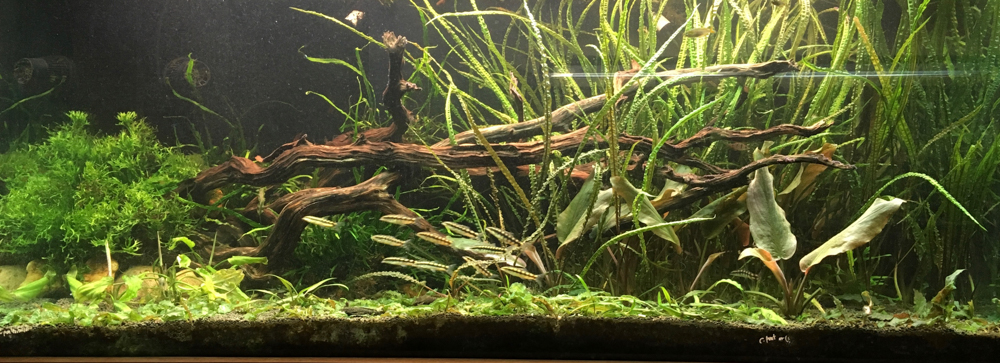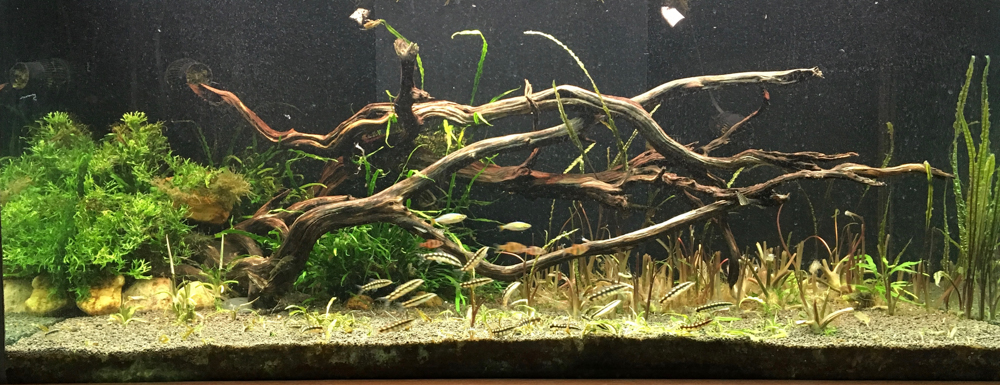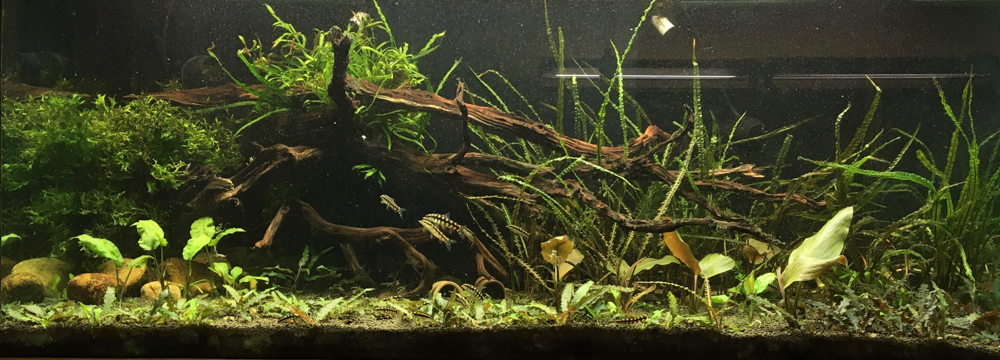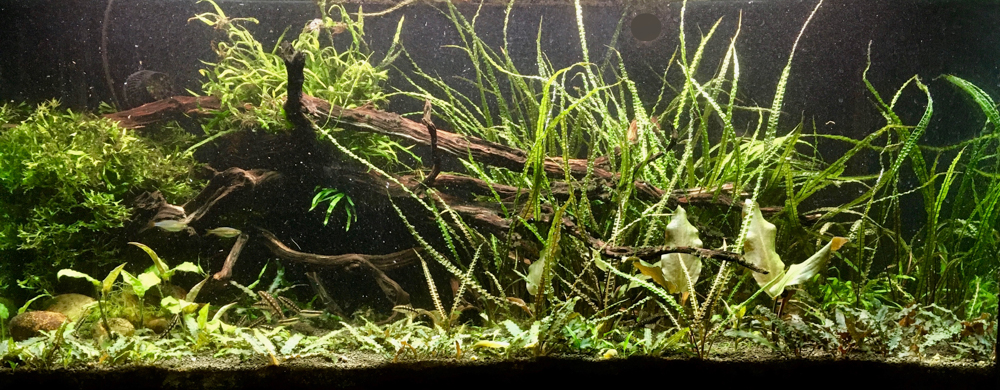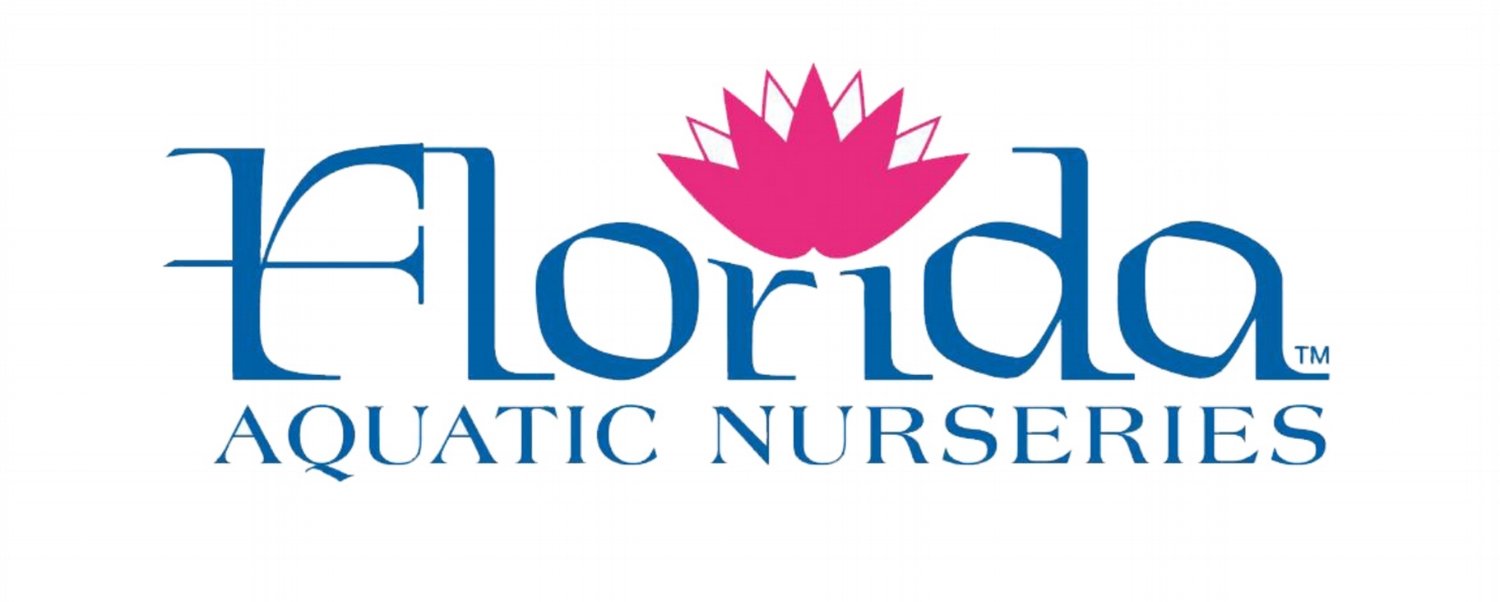Cryptocoryne Leaf Rot or Melt - What is it and can I prevent it?
A healthy aquarium owned by Neil Frank (photo by Neil Frank) with a number of different Cryptocoryne species grown submersed.
Cryptocoryne rot is a documented phenomenon that effects Cryptocoryne of many different species. Although they don’t appear to be, Cryptocoryne sp. are sensitive plants. Environmental changes in their habitat may cause the foliage of a completely healthy plant to partially or totally disintegrate. In the wild, this is in response to environmental changes that make the leaf shape no longer useful. The plants will shed their old leaves quickly to grow new leaves more suited to their environment.
Things such as water changes or changes to fertilization or CO2 levels can initiate this phenomenon in the aquarium. Relocation or changes in lighting can also cause Cryptocoryne melt. The rhizomes remain alive underground and will grow new leaves eventually if aquarium conditions stabilize and one remains patient.
The best method of prevention is to maintain a stable environment. Perform regular, frequent, water changes and fertilize gently and regularly. If using supplemental CO2, keep the input stable. If using fluorescent light, change out just one tube at a time, rather than all at once.
Most commercially produced Cryptocoryne sp. are grown emmersed (above water) at this point and are very strong in this growth form. They adapt very nicely to conditions in a healthy aquarium. Only after the submersed form is produced in the aquarium are you you likely to observe this phenomenon.
We are very lucky that Neil Frank has documented this phenomenon in detail in one of his very beautiful, well-maintained tanks over a period of weeks and allowed us to share the photos with you, through the melt process right to full recovery again:

